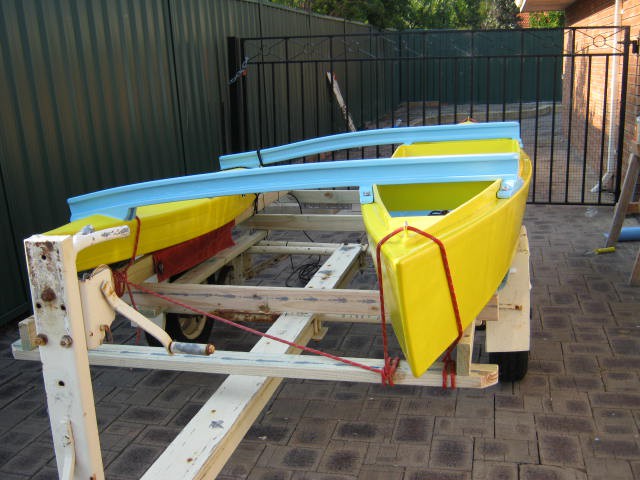Trailer
At about 35 kg the outrigger canoe is too heavy and awkward to lift above my head and place on my car roof-rack by myself. So no choice but to use a trailer. Here is my old trailer:

Here is the new trailer:
The lower longitudinal is attached to the pipes of the trailer with U-bolts. Then a set of transverse beams and then a a set of 3 m longitudinal beams. I use 130 mm long (recessed) coat-bolts to join the timbers. The timber is 90 mm x 37 mm H3 treated F7 pine. F7 is rated at 6.9 MPa in bending. How strong is that? Not great! The rear overhanging beams (~0.85 m) are rated (i.e. working load) at 42 kg each (84 kg total). For short duration loads you can double this (168 kg). To break it approximately 284 kg would be required.
Even though it is H3 treated it will still need to protected against sunlight. So it will need to be sealed and painted for longevity (and to retain the design strength).
Busy with social engagements this week end so if the weather is good on Monday then I can test the out-rigger in the water.
Weight
Looking a the weight of other light weight kayaks (~15 kg) I concluded that my weight estimate of 35 kg is quite reasonable. However, I could certainly get the weight down by using 4 mm plywood rather than the 6 mm plywood for both the canoe and the pontoon. The cross-beams could also be reduced in weight as well. I think 25 kg could be achievable without extreme measures.
AlanX
 agp.cooper
agp.cooper
Discussions
Become a Hackaday.io Member
Create an account to leave a comment. Already have an account? Log In.